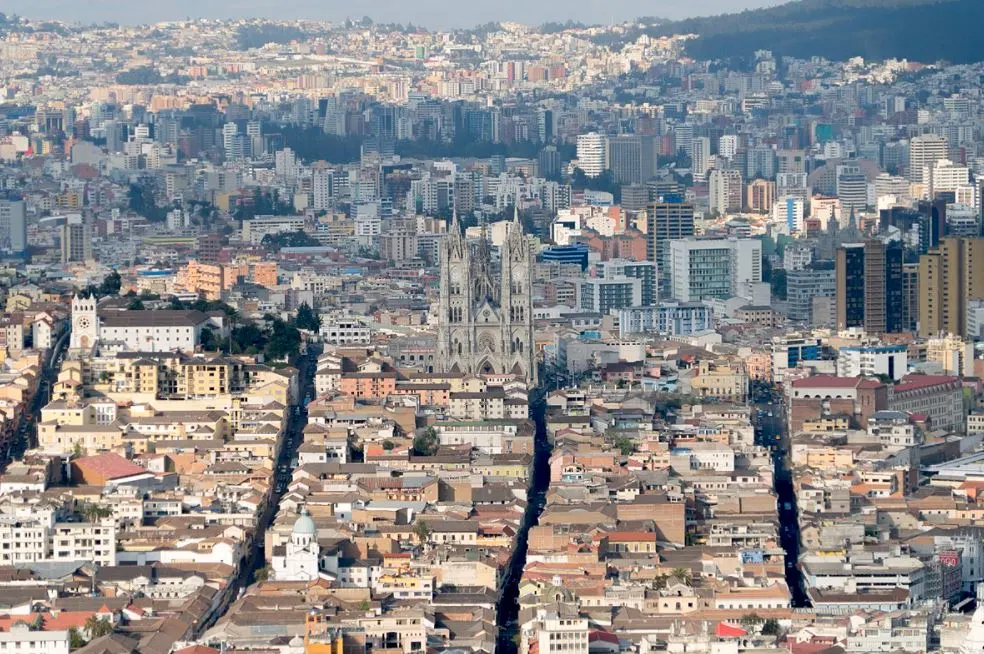The city of Rome was built on 7 historic hills and Montmartre provides astounding views of Paris. The hill described in this article can definitely hold a candle to these, that’s for sure.
Let’s take a closer look at some of the most interesting facts about El Panecillo, one of the most amazing mountains in Quito, the capital of Ecuador in South America.
1. It’s located just southwest of Quito’s historical center
El Panecillo is the name of a hill located just southwest of the center of the capital of Ecuador, Quito. The city is world-famous for its well-preserved historic center which is also one of the largest in South America.
Quito is by far the largest city in Ecuador and has over 3.1 million inhabitants in its metropolitan area. It’s also the closest capital city in the world to the equator as the city’s main square is located just 25 kilometers (16 miles) south of it.
This hill is by far one of the best locations to get astounding views of the city as well and is very popular among tourists.

2. It stands over 200 meters above the urban landscape below
The main reason is that this little hill rises about 200 meters (656 feet) above the city below.
The name of the hill refers to the Spanish word describing a small piece of bread, a reference to the shape of the hill.
It’s of volcanic origin and its soil consists of so-called “loess,” a type of sediment that consists of heaps of wind-blown dust. This process gave the hill its distinctive round shape.
The city of Quito is located at an elevation of 2,850 meters (9,350 feet) above sea level, and the summit of the hill at 3,016 meters (9,895 feet).

3. The street leading up to the summit was named after a Spanish General
Hiking up this remarkable feat of nature in the middle of a bustling city is possible. There’s a winding road leading up to the summit called “Gral Melchior Aymerich.”
This name is a reference to Melchior Aymerich (1754-1836), a Spanish general and the last president of the Royal Audience of Quito.
He only served a couple of weeks before surrendering on May 24, 1822, to rebel forces following his defeat at the Battle of Pichincha. This event resulted in the liberation of Quito.
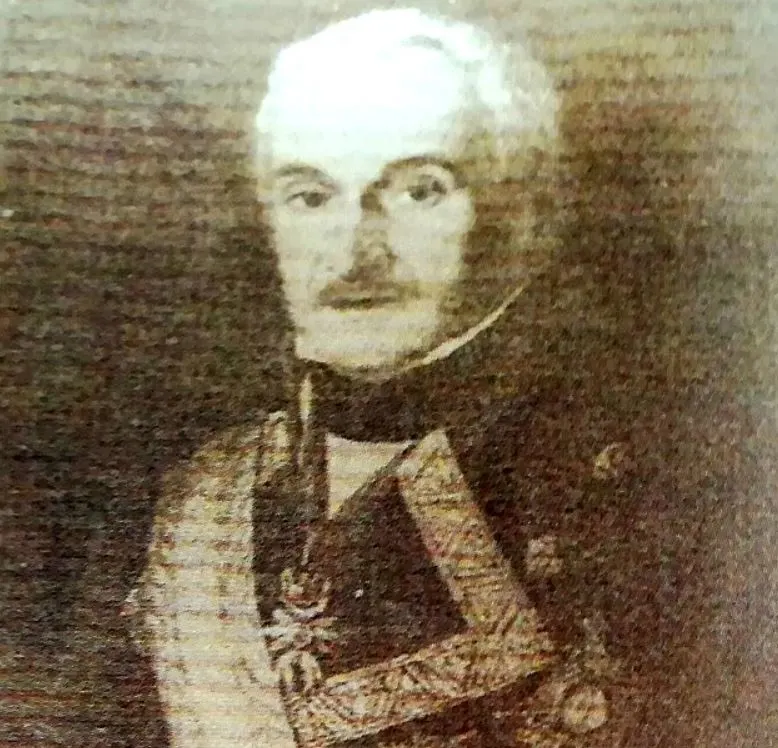
4. The native inhabitants once worshipped the sun on top of this hill
According to Jesuit priest and historian Juan de Velasco y Pérez Petroche (1727–1792), the summit of the hill was considered to be sacred by the natives living in the area of Quito.
They referred to the hill as “Yarivac” and it was the location of a temple complex. They reportedly worshipped the sun on this location as well.
Nothing of this temple complex remains today because it was destroyed by the Spanish following their conquest of Quito.

5. An enormous statue now decorates its summit
The hill is such an amazing landmark in the city that the local religious order of the Oblates commissioned a huge statue to decorate the summit.
The enormous statue of a Madonna crushing a dragon-like snake was inaugurated on March 28, 1976, and is known as the “Virgen de El Panecillo” or “Virgin of the Panecillo.”
This enormous statue stands 41 meters (135 feet) tall (including the base) and dominates the city skyline. It forms a magnificent background to the city’s fascinating history center.
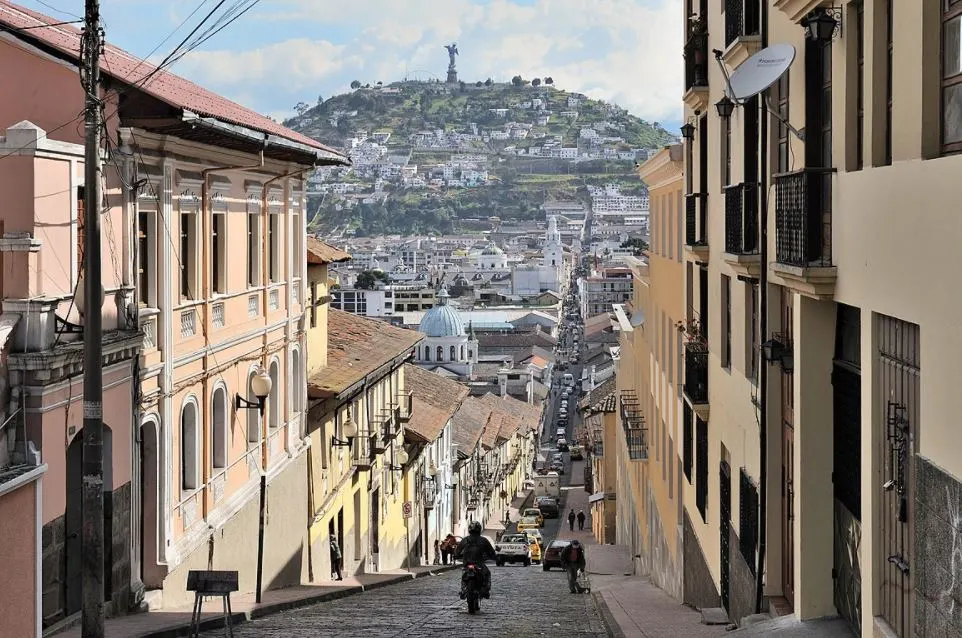
More interesting facts about El Panecillo
6. The statue of the Madonna on top of the hill consists of 7,400 pieces of aluminum. These were initially assembled by Spanish sculptor Agustín de la Herrán Matorras.
These pieces were clearly numbered and they had to be. The statue was initially assembled in Spain and subsequently disassembled and shipped to Ecuador. It was eventually assembled again on top of the hill, a work that was completed on March 28, 1975.
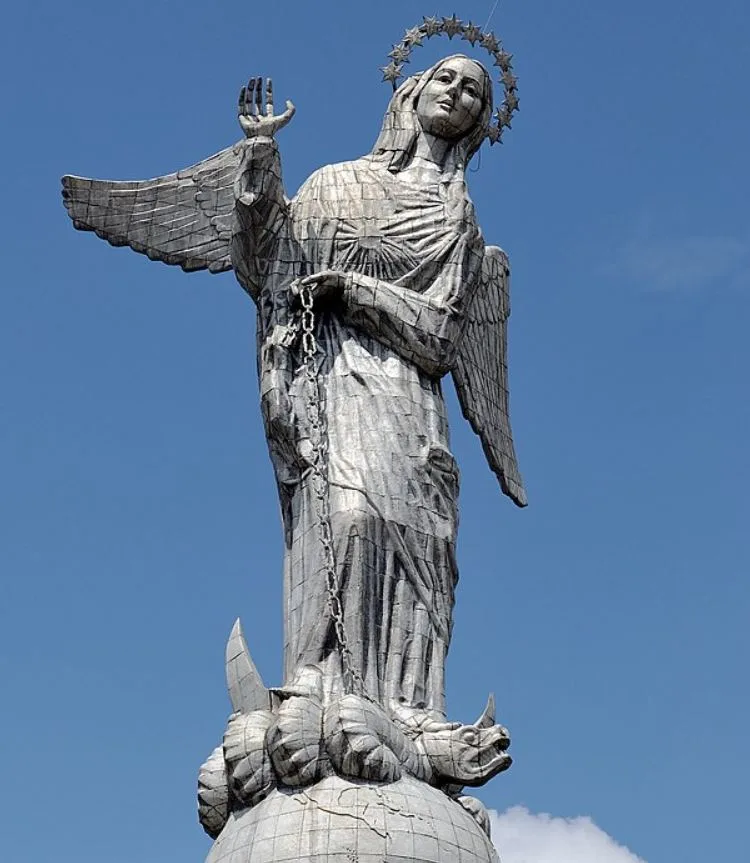
7. The design of the statue was modeled on another important work in the history of Quito known as the “Virgen de Quito” (Madonna of Quito).
This 18th-century wooden sculpture stands 121 centimeters (48 inches) tall and was revolutionary because it depicts the Madonna in a dancing motion.
It was completed by Bernardo de Legarda (1700-1773) in 1734 and was a defining work of the Quito School of art.
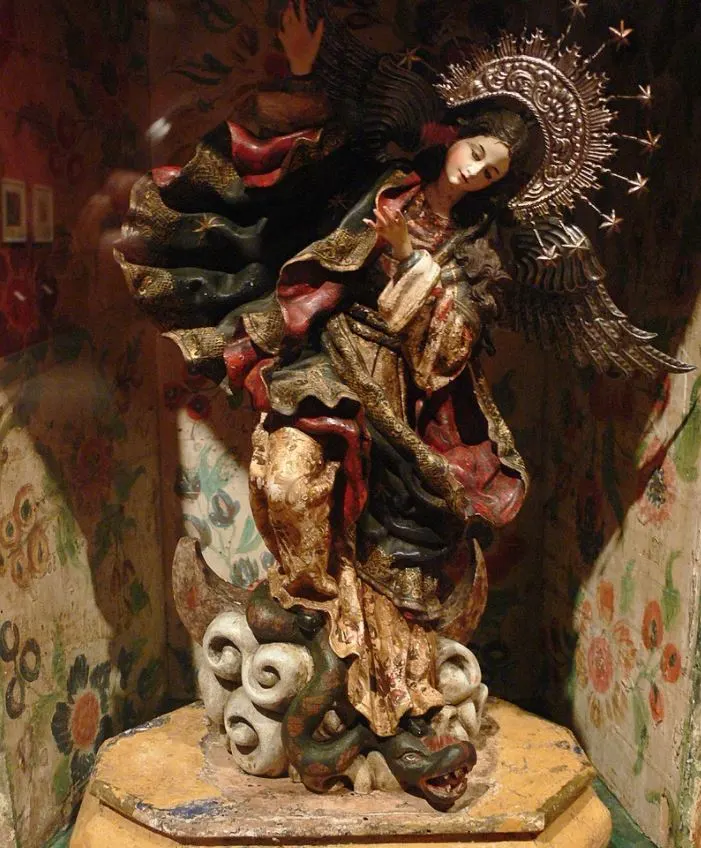
8. The statue also follows the description of the “Woman of the Apocalypse,” a figure that is referenced in Chapter 12 in the Book of Revelation.
This is why she can be seen crushing a dragon-like snake with her feet on top of a globe, something described in detail in this chapter.
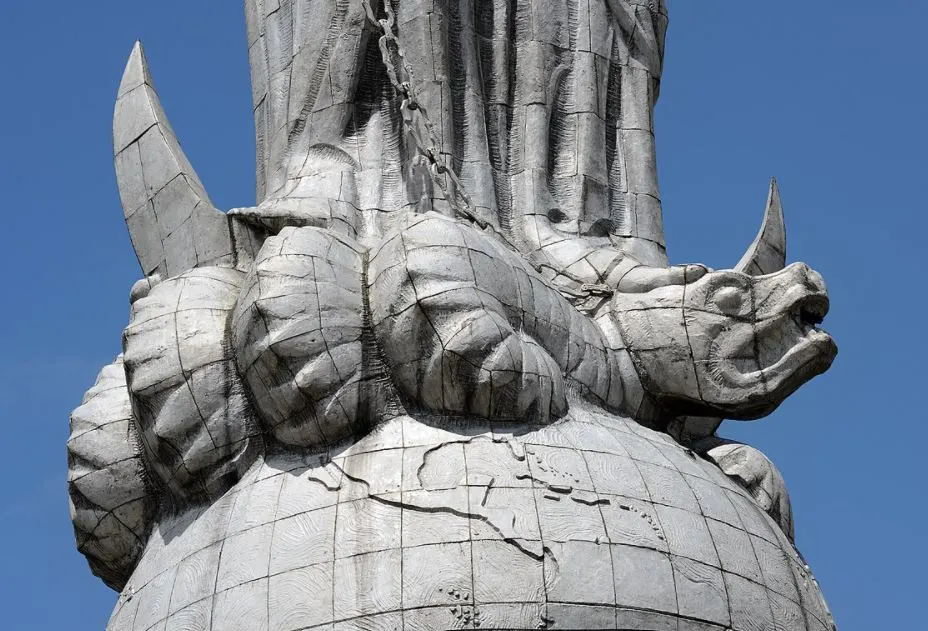
9. The sheer size of this monument in combination with the location and distinctive dancing movement in which the Madonna is depicted are reasons enough to qualify this as a remarkable landmark.
There’s something else, though, that makes this statue different. It’s claimed to be one of the only statues of a Madonna depicted with wings like an angel, with locals claiming it’s the only one in the world.
10. Hiking up the hill is possible but quite tiring. Luckily, there are plenty of taxis available in case you don’t feel like walking all the way to the top of the summit.
When you do reach the summit, you’ll get an amazing view of the historic center of the city which features the largest Gothic Cathedral in the country, the “Basílica del Voto Nacional.”
This view is quite something, don’t you think?
